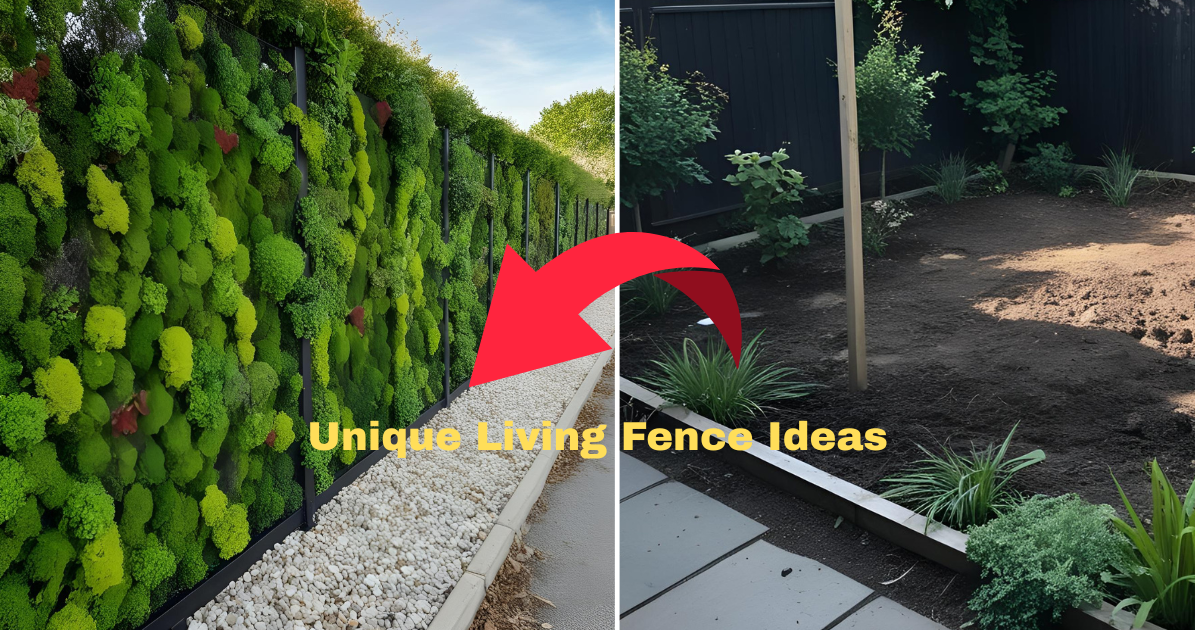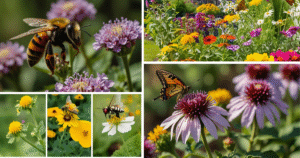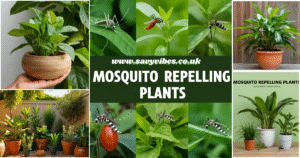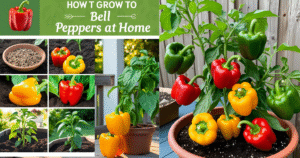Few options can compete with the charm and functionality of a living fence when creating a private outdoor oasis. Unlike traditional wooden or metal fences, which can appear stark or impersonal, living fences offer natural beauty, seasonal interest, and a touch of greenery that helps transform your space into a serene retreat.
Whether you’re looking to block unwanted views, reduce noise, or simply add a layer of privacy to your garden, a living fence made of various plants is an eco-friendly and aesthetically pleasing choice. These living barriers enhance your landscape with colorful flowers, lush foliage, and even seasonal fruit or berries, making your fence a barrier and a feature in your garden design.
This guide will explore 10 unique and beautiful living fence ideas using different plant varieties. These living fences can provide privacy while offering environmental benefits such as supporting local wildlife, improving air quality, and creating natural windbreaks.
—
Why Choose a Living Fence?
A living fence offers more than just privacy—it creates a natural, welcoming environment for your outdoor space. Here are some of the key reasons why you might want to consider planting a living fence:
1. Aesthetic Appeal: Living fences are vibrant and organic, adding seasonal beauty and texture to your yard.
2. Privacy & Seclusion: They provide an effective and natural way to block views from neighbors or busy streets.
3. Noise Reduction: Dense foliage absorbs sound, creating a quieter, more peaceful atmosphere in your garden.
4. Environmental Benefits: A living fence can reduce carbon footprints, cool your home naturally, and protect the soil from erosion.
5. Wildlife Habitat: Many plants attract birds, bees, butterflies, and other pollinators, supporting biodiversity in your garden.
—
How to Plan Your Living Fence
Before diving into your living fence project, consider the following factors to ensure the best results:
1. Purpose of the Fence: Are you seeking privacy, noise reduction, or a decorative barrier?
2. Plant Varieties: Based on your space and desired effect, choose a combination of evergreens, flowering shrubs, and vines.
3. Sun and Shade: Be mindful of your chosen plants’ sunlight requirements—some prefer full sun, while others thrive in partial or full shade.
4. Growth Rate & Maintenance: Select plants that match the speed and care level you’re comfortable with.
5. Soil and Watering Needs: Test your soil type and be prepared to amend it for optimal growth.
—
1. Arborvitae Privacy Hedge
Zones: 3–7
Sun: Full sun to partial shade
Growth Rate: 3+ feet per year
Height at Maturity: 10–20+ feet
Arborvitae is a classic choice for creating a tall, narrow living fence. This evergreen grows quickly and forms a dense barrier that offers year-round privacy. The ‘Green Giant’ variety is especially popular, as it can grow up to 3 feet per year.
Pros:
Provides year-round privacy
Requires minimal maintenance
Tolerates a range of soils
Tips: Plant 3–5 feet apart to create a dense, uninterrupted screen.

—
2. Cedar Fence for Natural Aesthetic
Zones: 4–9
Sun: Full sun
Growth Rate: 2–3 feet per year
Height at Maturity: 10–25 feet
Cedar trees are an excellent option for a rustic, woodsy feel. Their natural scent and ability to withstand harsh conditions make them a standout choice for privacy fencing. They can grow into tall, straight barriers that add character to your garden.
Pros:
Resilient to pests
Natural fragrance
Ideal for larger properties
Tips: Cedar trees work well when planted in slightly sandy soil for better drainage.
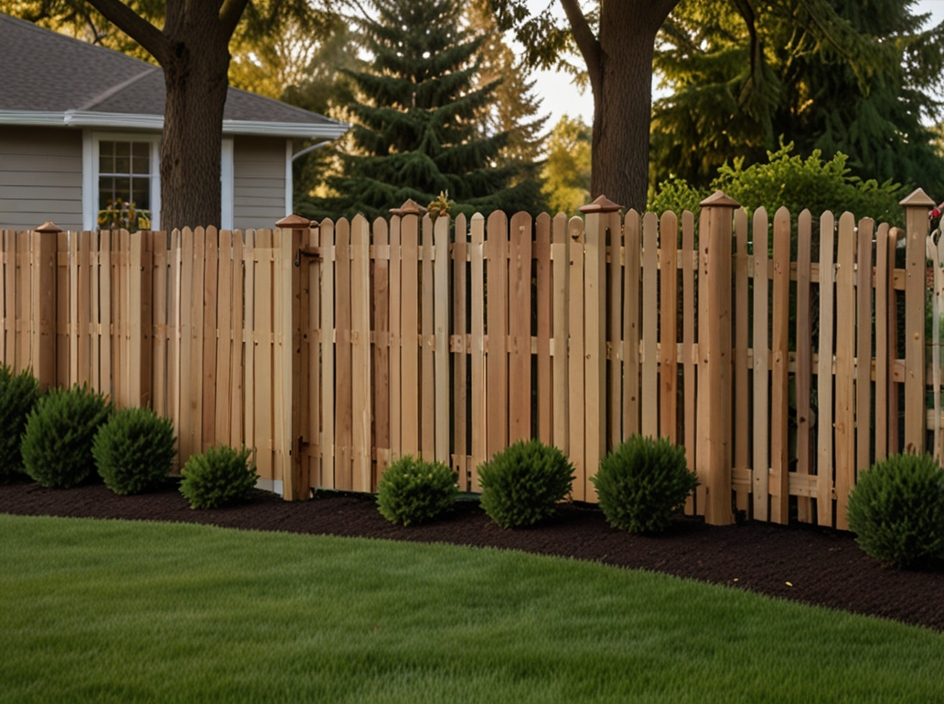
—
3. Flowering Lilac Fence
Zones: 3–7
Sun: Full sun
Growth Rate: 1–2 feet per year
Height at Maturity: 8–12 feet
If you love fragrant flowers, lilacs are an excellent choice for a living fence. These shrubs bloom in late spring, offering colorful, sweet-smelling flowers that can transform your backyard into a sensory paradise.
Pros:
Beautiful, fragrant flowers
Attracts pollinators
Provides a colorful fence in spring
Tips: Prune after flowering to maintain shape and promote the next round of blooms.
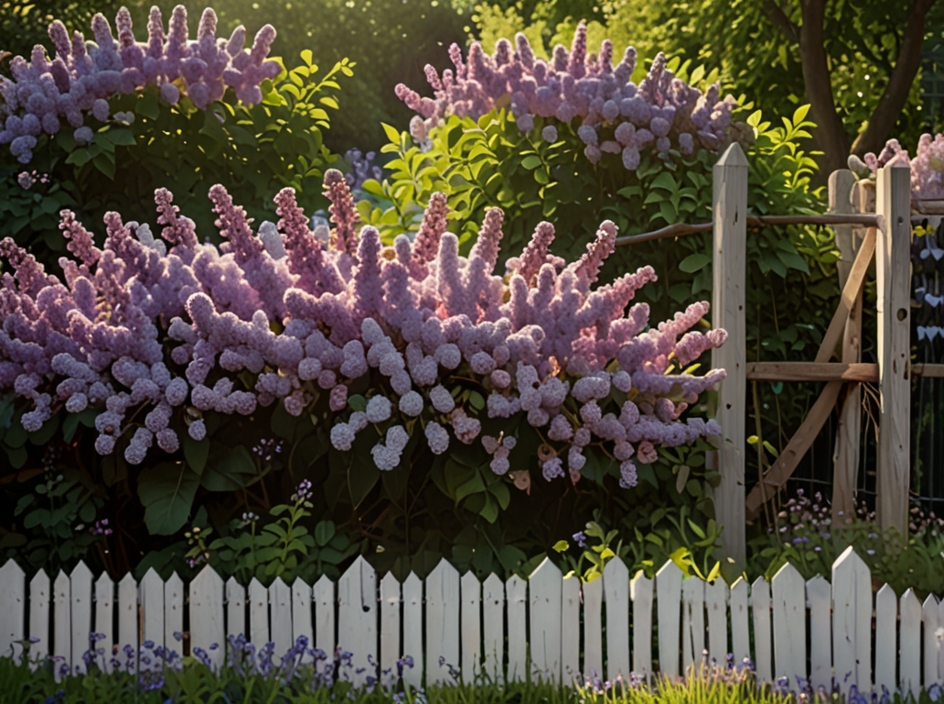
—
4. Holly for a Formal, Evergreen Fence
Zones: 5–9
Sun: Full sun to partial shade
Growth Rate: 1–2 feet per year
Height at Maturity: 10–20 feet
Holly shrubs provide a formal and evergreen option for a living fence. Their glossy green leaves and red berries offer beauty year-round and are excellent for creating an orderly and dense barrier.
Pros:
Evergreen privacy
Provides seasonal berries for birds
Tolerates both sun and shade
Tips: Trim holly bushes annually to maintain their shape and keep them thick.

—
5. Fast-Growing Privet Hedge
Zones: 5–9
Sun: Full sun to partial shade
Growth Rate: 2–3 feet per year
Height at Maturity: 8–15 feet
Privet is a classic hedge plant that creates a dense, fast-growing living fence. It’s often used in more formal landscapes but can also be left to grow more naturally for a softer, informal look.
Pros:
Fast-growing
Prunes well for a neat appearance
Tolerates most soil types
Tips: For the best results, trim back regularly to encourage bushy growth.
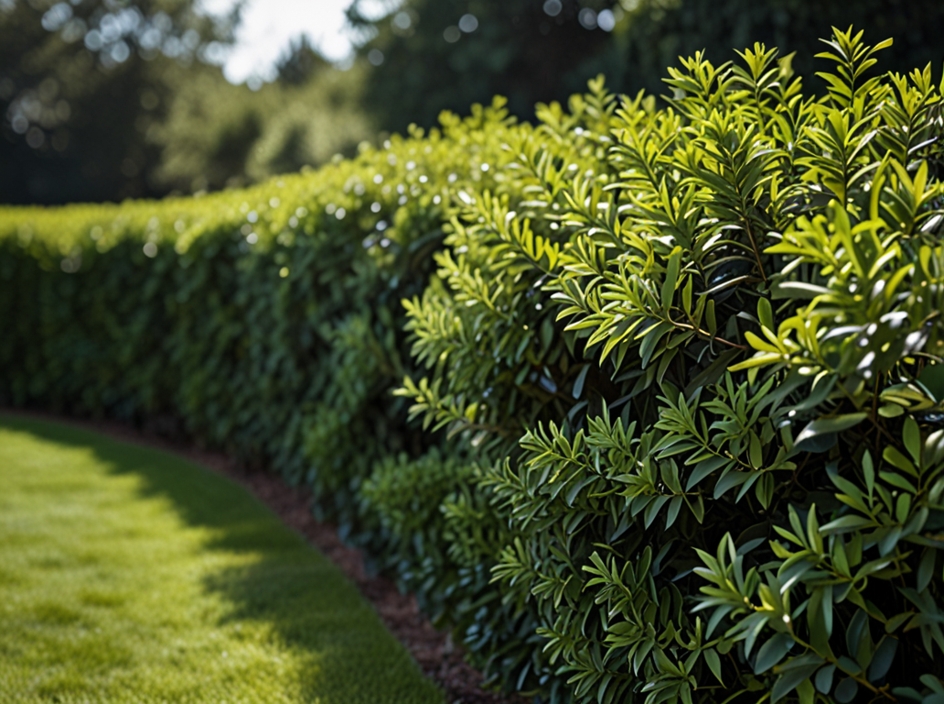
—
6. Mixed Evergreen Fence
Zones: 3–9
Sun: Full sun to part shade
Growth Rate: Varies by species
Height at Maturity: Varies by species
Planting a mix of evergreen shrubs like boxwood, juniper, and yew can provide a complete, lush barrier that remains green throughout the year. The diversity of evergreen plants ensures that your fence won’t be monotonous, even during winter.
Pros:
Year-round beauty
Low maintenance
Customizable height and width
Tips: Use different varieties to create visual interest and texture.
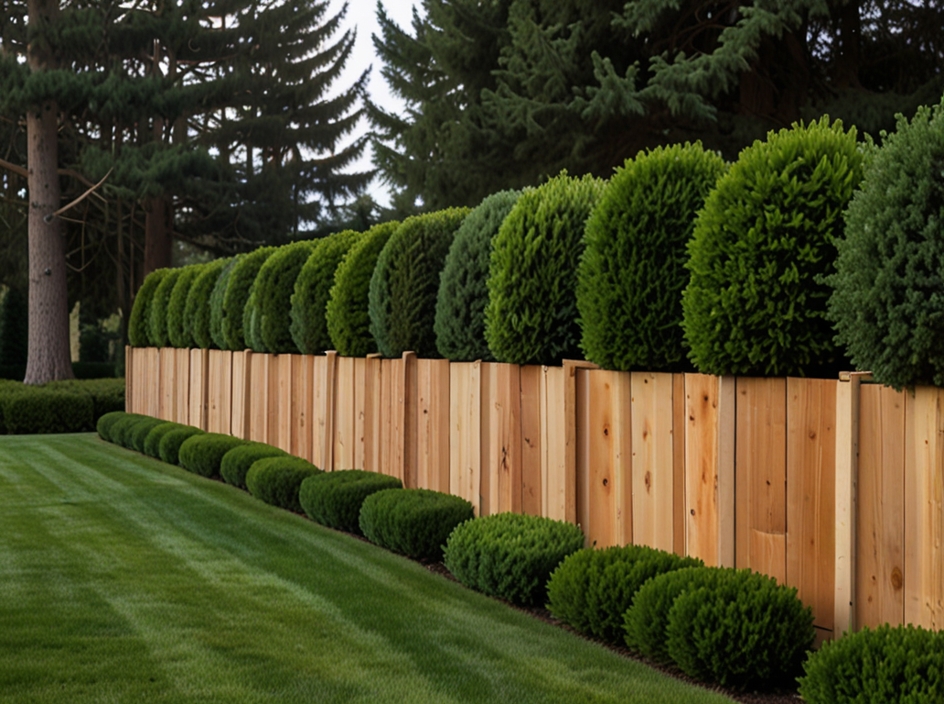
—
7. Vibrant Forsythia Fence
Zones: 5–8
Sun: Full sun
Growth Rate: 2–4 feet per year
Height at Maturity: 8–10 feet
Forsythia shrubs, with their bright yellow flowers, explode with color in early spring. This shrub is an excellent choice for a seasonal privacy screen, offering rapid growth and vibrant color.
Pros:
Early spring blooms
Tolerates drought
Low maintenance
Tips: Prune immediately after blooming to maintain its shape and encourage more flowers.
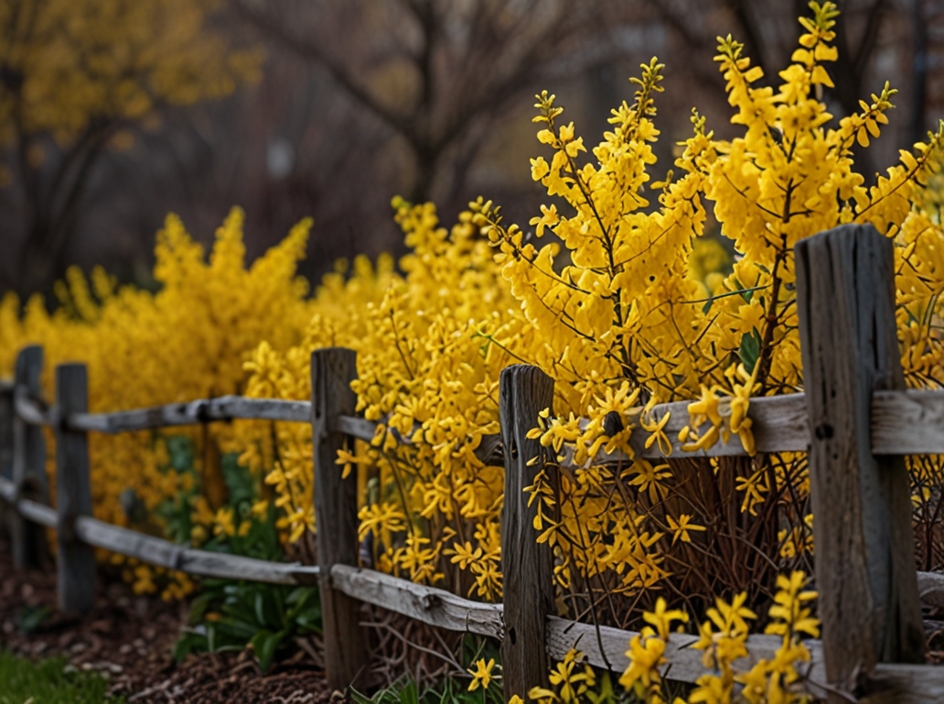
—
8. Clematis Vines for Vertical Privacy
Zones: 4–9
Sun: Full sun
Growth Rate: 3–4 feet per year
Height at Maturity: 10–15 feet
Clematis vines proliferate and can be trained to climb fences, trellises, or posts, creating a living wall of flowers. They bloom in various colors, making them an attractive option for vertical fences.
Pros:
Gorgeous, colorful blooms
Can be trained to cover fences or structures
Ideal for small spaces
Tips: Provide a support structure like a trellis for optimal growth.
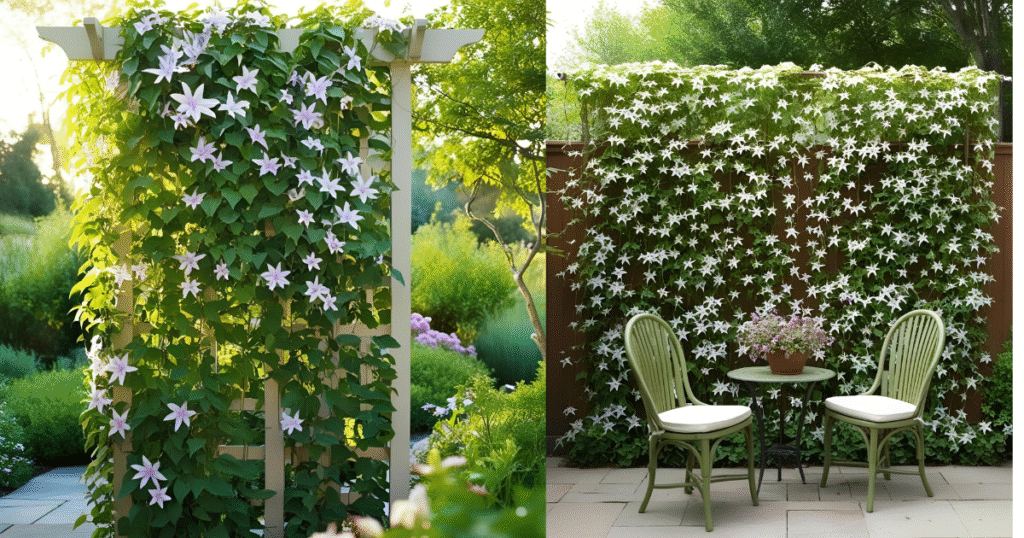
—
9. Honeysuckle for Scented Privacy
Zones: 4–9
Sun: Full sun
Growth Rate: 3–5 feet per year
Height at Maturity: 10–15 feet
Honeysuckle is an aromatic, fast-growing vine that adds privacy and a delightful fragrance to your garden. It covers fences, gates, or walls with colorful blooms and sweet smells.
Pros:
Beautiful flowers and scent
Grows rapidly
Attracts hummingbirds and bees
Tips: Prune to keep the vine from becoming too aggressive.
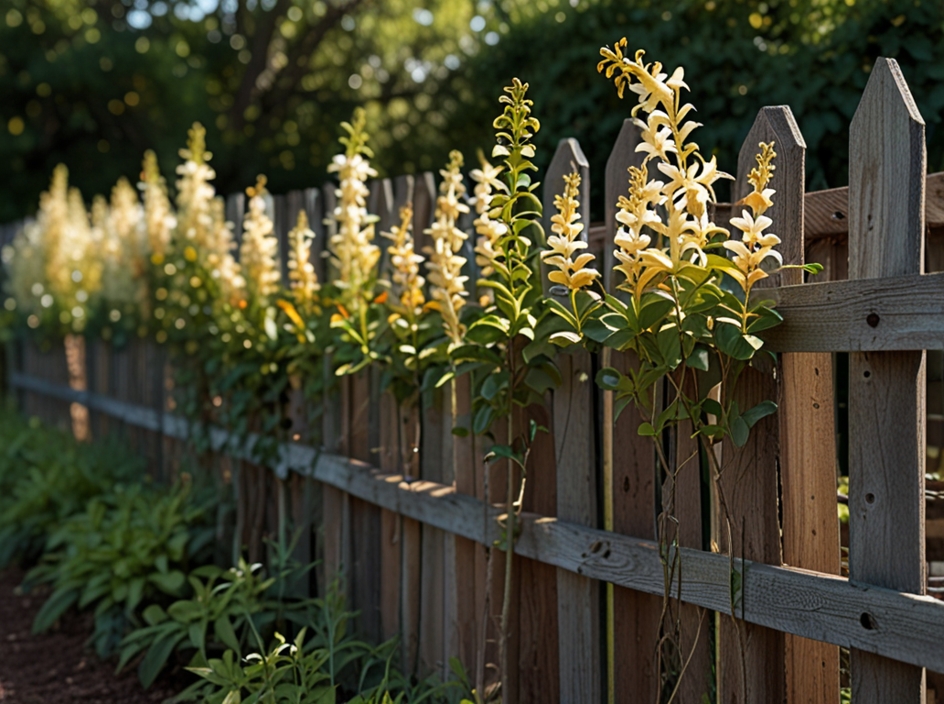
—
10. Butterfly Bush for Pollinator-Friendly Privacy
Zones: 5–9
Sun: Full sun
Growth Rate: 2–4 feet per year
Height at Maturity: 6–12 feet
Butterfly bush is fast-growing and an excellent choice for attracting pollinators. Its long-lasting blooms, in vibrant colors, add beauty and attract butterflies, bees, and hummingbirds.
Pros:
Attracts pollinators
Blooms from summer to fall
Easy to maintain
Tips: Reduce the bush in early spring to encourage fresh, vigorous growth.

—
Conclusion
A living fence can be the perfect solution for creating privacy and beauty in your garden. You can create a unique and functional barrier that transforms your outdoor space by carefully selecting plants based on their growth rate, maintenance needs, and aesthetic appeal. Whether you prefer a dense evergreen hedge, a fragrant flowering fence, or a fast-growing vine, there’s a living fence option for every need. With proper care and attention, your living fence will flourish, providing privacy, beauty, and wildlife support for years.

